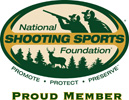U.S. Attorney’s Office and ATF Announce $500,000 Project Safe Neighborhoods Federal Grant
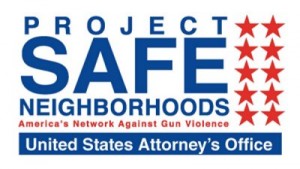 John Parker, U.S. Attorney for the Northern District of Texas, and William Temple, Special Agent in Charge, Bureau of Alcohol, Tobacco, Firearms and Explosives Dallas Field Division, joined Ken Shetter, President of One Safe Place, and Joel Fitzgerald, Fort Worth Chief of Police, at a press conference this morning to announce a $500,000 federal grant that has been awarded to One Safe Place to implement the Project Safe Neighborhoods (PSN) initiative in two Fort Worth neighborhoods.
John Parker, U.S. Attorney for the Northern District of Texas, and William Temple, Special Agent in Charge, Bureau of Alcohol, Tobacco, Firearms and Explosives Dallas Field Division, joined Ken Shetter, President of One Safe Place, and Joel Fitzgerald, Fort Worth Chief of Police, at a press conference this morning to announce a $500,000 federal grant that has been awarded to One Safe Place to implement the Project Safe Neighborhoods (PSN) initiative in two Fort Worth neighborhoods.
PSN is a nationwide commitment to reduce gang and gun crime in the U.S. by networking existing local programs that target gun and gang crime and providing these programs with additional tools for success. PSN’s strategic approach brings more “science” into criminal justice operations by leveraging innovative applications of analysis, technology and evidence-based practices to improve performance and effectiveness while containing costs.
The grant is one of only seven half-million dollar grants awarded by the Justice Department’s Office of Justice Programs Bureau of Justice Assistance and funded under the 2016 Violent Gang and Gun Crime Reduction/Project Safe Neighborhoods initiative. This grant also addresses domestic violence, which, according to many statistics, is a major contributing factor for the increase in gun and violent crimes. Continue reading
ATF Releases U.S. Firearm Trace Data for 2015
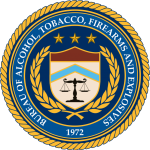 The Bureau of Alcohol, Tobacco, Firearms and Explosives (ATF) released today firearm trace data for all individual U.S. states and territories for calendar year 2015. Trace information provides investigative leads to law enforcement and can link a suspect to a firearm in a criminal investigation. Firearm traces also help identify potential firearm traffickers, and detect in-state, interstate and international firearm trafficking patterns, including the sources and types of crime guns.
The Bureau of Alcohol, Tobacco, Firearms and Explosives (ATF) released today firearm trace data for all individual U.S. states and territories for calendar year 2015. Trace information provides investigative leads to law enforcement and can link a suspect to a firearm in a criminal investigation. Firearm traces also help identify potential firearm traffickers, and detect in-state, interstate and international firearm trafficking patterns, including the sources and types of crime guns.
ATF’s Violent Crime Analysis Branch produces this annual report using trace information compiled at ATF’s National Tracing Center (NTC), the nation’s only crime gun tracing facility. The NTC provides critical information that assists domestic and international law enforcement agencies to solve firearm crimes, detect firearm trafficking patterns, and identify trends with respect to intrastate, interstate and international movement of crime guns.
In 2015, there were 190,538 firearms recovered and traced back to a purchaser in the United States, an increase of more than 20,000 firearms recovered and traced in the previous year. The majority of the traces involved 9 mm (more than 55,000) and .22 caliber (more than 35,000) firearms. The top three types of firearms traced last year were pistols (more than 150,000 traces), revolvers (more than 44,000 traces) and rifles (more than 41,000 traces).
The released firearm trace data offers a description of firearms recovered and traced in each state along with the source states of the firearms recovered.
In addition to the number of recovered and traced firearms per state, the report includes recovery location information, the average time it took from when a firearm was purchased to when it was recovered in a crime, and the criminal offense associated with the firearm.
To access the complete 2015 firearms trace report, visit ATF’s online statistics page at https://www.atf.gov/about/firearms-trace-data-2015.
ATF Publishes Open Letter Law Enforcement on 41F Policies
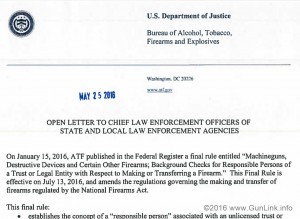 The BATFE recently published an open letter to Chief Law Enforcement Officers (CLEOs) regarding the January 41F ruling (fmr 41P) which makes changes to the way in which NFA applications are handled for legal entities and individuals.
The BATFE recently published an open letter to Chief Law Enforcement Officers (CLEOs) regarding the January 41F ruling (fmr 41P) which makes changes to the way in which NFA applications are handled for legal entities and individuals.
In part, the letter specifies “that a copy of all applications to make or transfer a firearm, and the responsible person questionnaire, if applicable, be forwarded to the [CLEO] of the locality in which the applicant, transferee or responsible person is located (“CLEO notification”)” and that the ruling “eliminates the requirement that an applicant obtain a certification signed by the CLEO before the transfer or making of an NFA firearm may be approved.“
The letter goes on to explain that there is no action required by the CLEO upon receipt (or lack thereof) of the paperwork – to include even confirming receipt of the documents. Further, the letter says that it is up to each CLEO to determine how they dispose of or retain (and whether or not they do either).
Of immediate concern are several potential issues regarding this lackadaisical hands-off approach to record keeping and privacy mandates. One concern would be with how an applicant would prove that they met the new CLEO notification requirement if there is no acknowledgment of receipt by the CLEO, and what future repercussions might be. Application denials? Revocation of approved applications with forced surrender of the firearms? The ATF has already proven that they are not above such tactics in the recent Form 1 Machine Gun debacles, which are still in litigation. Or worse?
The second concern would be how the CLEOs are protecting applicants sensitive information that is contained in the notification paperwork. As the $200 cost associated with making or transferring NFA firearms ($5 for transferring AOWs) is not a fee or a price for goods or services sold but, rather, the tax paid for making or transferring the item, the application could well be considered a tax document. This document details the what firearms are being made or transferred, at which physical address, and – for many applicants – their home address, photograph, fingerprints, signature, and other sensitive information. This information could potentially be problematic if it fell into the wrong hands, which is not outside the realm of possibilities when the CLEO is able to simply toss your notification paperwork into the trash bin for dumpster divers to find or leave it laying around on a desk at the PD for petty crooks to have a look at as they are brought through.
As if identity theft wasn’t enough of an issue, without any mandated safeguards on how this information is to be protected, consider the possibility of a motivated criminal coming to Joe Gunguy’s house at 123 Anystreet Lane to steal the expensive 7.5″ Noveske 5.56 AR-15 pattern rifle to use on the streets. If this firearm is so much more dangerous than an off-the-shelf firearm that it requires owners to to register them and pay an extra $200 tax on them and notify the government when we travel with them, does it make sense for the CLEOs to treat the information about those weapons so recklessly? Or is this just another spotlight on the absurdity of the NFA in general?
The full text of the letter is here. Further discussion of the open letter to CLEOs is available on Joshua Prince’s law blog.
Gang Members Who Shot Up Mother’s Day Parade Get Life
ATF Success Story: Brothers Sentenced Three Years After 2013 Parade Violence
 Shootings, drugs, gang violence. It’s in the news a lot these days…most every day, in some fashion. What isn’t seen every day, what doesn’t usually make breaking news is when justice is delivered and the shooters are taken off the streets.
Shootings, drugs, gang violence. It’s in the news a lot these days…most every day, in some fashion. What isn’t seen every day, what doesn’t usually make breaking news is when justice is delivered and the shooters are taken off the streets.
Three years ago, on a sunny afternoon in New Orleans, a Mother’s Day celebration turned violent when shots rang out leaving 20 people injured. A parade was underway in the 7th Ward in New Orleans. The gun play? It was all about control over turf, drugs, and the Frenchmen/Derbigny, also known as the FnD gang.
Last month, Travis Scott, aka “Trap,” aka “Slim,” Shawn Scott, aka “Shizzle,” Stanley Scott, aka “Stizzle,” and Akein Scott, aka “Keemy,” were sentenced in United States District Court, Eastern District of Louisiana for charges related to racketeering conspiracy, drug conspiracy, firearms conspiracy, and discharge of a firearm in furtherance of a drug trafficking crime. The Scott brothers had previously pleaded guilty to these charges.
According to court documents, the FnD gang was an enterprise engaged in racketeering under federal law. The Scott brothers, as members of this gang, conspired to commit numerous overt acts in furtherance of the gang’s activities. Gang members sold illegal drugs, such as heroin and crack cocaine, and they committed acts of violence, including shootings. FnD members often sold drugs in the Frenchmen Meat Market, a convenience store located at the corner of Frenchmen and North Derbigny Streets. FnD members used intimidation, violence, and threats of violence to maintain the gang’s control over turf that extended from Elysian Fields Avenue, North Johnson Street, the I-10 Interstate Highway, St. Anthony Street, and North Claiborne Avenue. Continue reading
ATF, NSSF Coordinate to Offer Reward in Firearm Theft Cases
Guns Stolen in South Carolina and Alabama

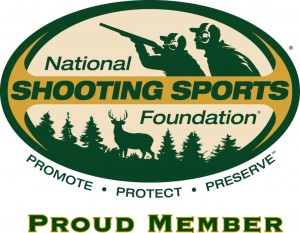 Not long after the recent release of the BATFE’s 2015 FFL Theft and Loss Report – which reported a total of nearly 15,000 lost or stolen firearms last year – the Bureau is trying to solve more firearm theft cases with the help of firearms industry industry trade association National Shooting Sports Foundation (NSSF).
Not long after the recent release of the BATFE’s 2015 FFL Theft and Loss Report – which reported a total of nearly 15,000 lost or stolen firearms last year – the Bureau is trying to solve more firearm theft cases with the help of firearms industry industry trade association National Shooting Sports Foundation (NSSF).
The BATFE, and NSSF have announced a reward for information leading to the arrest and conviction of those responsible for the theft of firearms from Lexington Pawn & Gun, a Federal Firearm Licensee (FFL), in Lexington, SC. ATF is offering a reward of up to $5,000, which will be matched by the NSSF for a total reward of up to $10,000.
Two separate burglaries occurred at Lexington Pawn & Gun, 4884 Sunset Blvd, Lexington, SC. On Feb. 13, 2016, at approximately 4 AM, unidentified suspect(s) broke into Lexington Pawn & Gun. The suspect(s) stole several firearms and fled the scene.
On March 5, 2016, at approximately 2:08 AM, unidentified suspect(s) broke into Lexington Pawn & Gun. The suspect(s) stole several firearms and fled the scene.
These crimes are being investigated by ATF and the Lexington Police Department.
In a, presumably unrelated incident, a separate reward is offered for information leading to the arrest and conviction for those responsible for the theft of firearms from Patriot Gun Sales in Montgomery, AL.
On March 10, 2016, Patriot Gun Sales, 3079 Wetumpka Highway, Montgomery, was burglarized and approximately 18 firearms were reported stolen to the Montgomery Police Department. ATF is offering the reward in the amount of $2,500, which will be matched by the NSSF for a total reward of up to $5,000.
These rewards are part of a larger national cooperative initiative between the NSSF and ATF in which NSSF matches ATF rewards in cases involving the theft of firearms from federally licensed firearms retailers. ATF works closely with members of the firearms industry to curb the criminal acquisition and misuse of firearms.
ATF along with our law enforcement partners are committed to ensuring that our communities are safe and that those who violate federal laws are held accountable. Anyone with information about these crimes should contact ATF at 1-800-ATF-GUNS (800-283-4867). All calls will be kept confidential.
ATF Releases 2015 FFL Theft and Loss Report
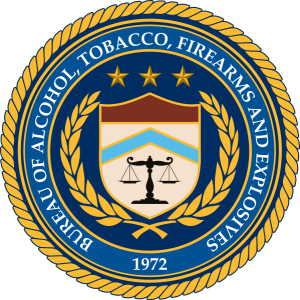 The Bureau of Alcohol, Tobacco, Firearms and Explosives (BATFE) is responsible for investigating instances where firearms are lost or stolen from a Federal Firearms Licensee (FFL). Part of ATF’s core mission is to protect the public from violent crime involving the use of firearms. Stolen firearms are used by violent offenders in the commission of crimes, and pose a substantial threat to the public and law enforcement.
The Bureau of Alcohol, Tobacco, Firearms and Explosives (BATFE) is responsible for investigating instances where firearms are lost or stolen from a Federal Firearms Licensee (FFL). Part of ATF’s core mission is to protect the public from violent crime involving the use of firearms. Stolen firearms are used by violent offenders in the commission of crimes, and pose a substantial threat to the public and law enforcement.
FFLs must report each lost or stolen firearm within 48 hours of discovery of the loss or theft by completing and forwarding a Federal Firearms Licensee Theft/Loss Report to ATF. In addition, the FFL must also report the firearm loss or theft to the appropriate local law enforcement agency.
There was a total of 14,800 lost or stolen firearms reported nationwide last year from FFLs. Of those firearms, 8,637 were reported as lost. Firearms are considered lost when an FFL takes a firearm into its inventory and later cannot account for the disposition of the firearm from its inventory during an inventory reconciliation.
There were 6,163 firearms reported stolen in 2015 by FFLs. Stolen firearms are broken down into three reporting categories: larceny, burglary and robbery. Continue reading







